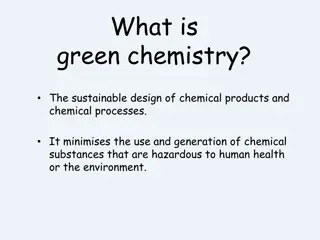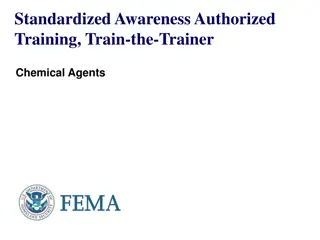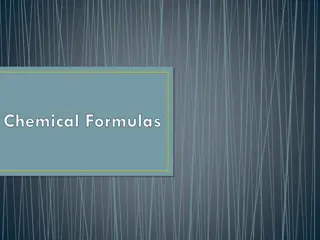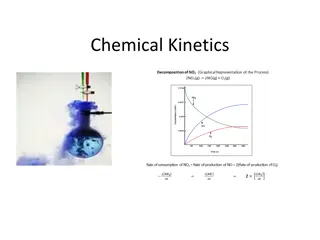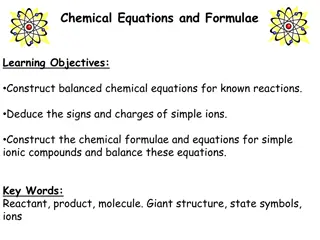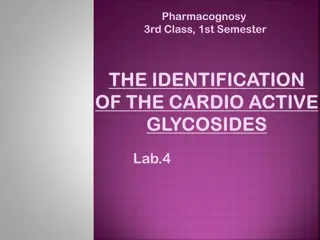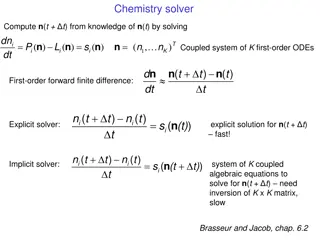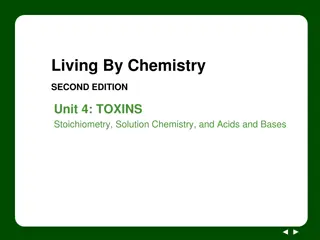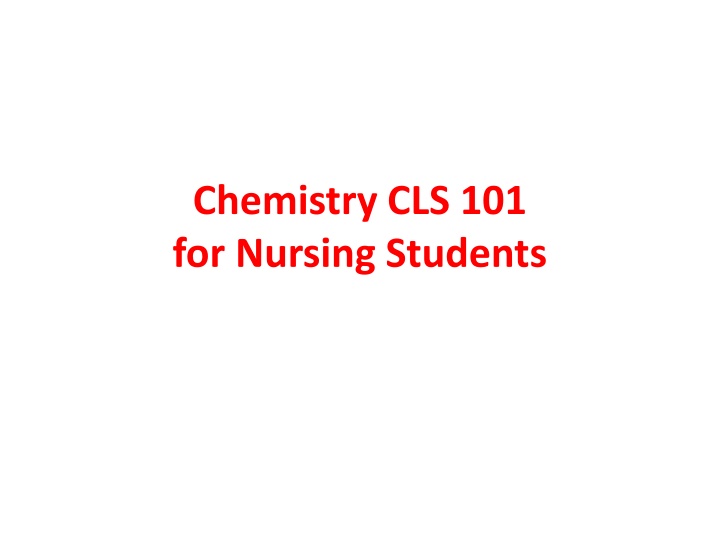
Chemical Bonds and Ionic Bonding in Chemistry
Explore the world of chemical bonds and ionic bonding in chemistry, where atoms combine to create a variety of substances. Learn about ionic bonds formed through electron gain or loss, resulting in charged ions, and delve into covalent bonds where electrons are shared between atoms. Discover the concept of electronegativity and how it influences bond formation, as well as the process of chemical reactions transforming components into new substances. Dive into the fascinating realm of chemistry tailored for nursing students.
Download Presentation

Please find below an Image/Link to download the presentation.
The content on the website is provided AS IS for your information and personal use only. It may not be sold, licensed, or shared on other websites without obtaining consent from the author. If you encounter any issues during the download, it is possible that the publisher has removed the file from their server.
You are allowed to download the files provided on this website for personal or commercial use, subject to the condition that they are used lawfully. All files are the property of their respective owners.
The content on the website is provided AS IS for your information and personal use only. It may not be sold, licensed, or shared on other websites without obtaining consent from the author.
E N D
Presentation Transcript
Chemistry CLS 101 for Nursing Students
When atoms combine, we obtain the variety of substances that surround us.
CHEMICAL BONDS Is the force of attraction between any two elements in a compound.
IONIC BONDS IONIC BONDS Bond formed due to the gain or loss of electrons in atoms i.e. due to atoms. Bond formed due to the gain or loss of electrons in atoms i.e. due to transfer atoms. transfer of electrons between of electrons between When an atom loses an electron it is a POSITIVE charge. When an atom gains an electron it is a NEGATIVE charge These newly charged atoms are now called IONS Example: NaCl (SALT)
Na (2,8,1) Na+ (2,8) + e- Cl (2,8,7) + e- Cl- (2,8,8) Na+ + Cl- NaCl Ions are the charged particles
Chemical Reaction A chemical reaction is a process during which one or more components are transformed into new substances.
IONIC BONDS IONIC BONDS The ionic bond is the force of attraction that binds together unlike charged ions to form a chemical compound.
Electronegativity Ionic bonds are formed due to differences in the tendency of atoms to attract electrons towards them. The tendency to attract electrons is known as Electronegativity.
COVALENT BONDS COVALENT BONDS Electrons are shared between two atoms. Each covalent bond between atoms involves two electrons. Thus if the atoms are similar in negativity then the electrons will be shared SHARING IS CARING!
Covalent Bond Covalent Bond When two electron pairs are shared, it is double bond. Example: C2F4
Non-Polar Covalent Bond Equal distribution of charge around a central atom. Molecule has a symmetrical shape.
Non-Polar Covalent Bond Example: The hydrogen atoms are sharing two electrons between themselves. Such a shared pair of electrons makes up a single bond. HA HB HB HA +
Polar Covalent bond Electrons are shared, but not equally. Some atoms have a stronger pull for the electrons. Molecule not symmetrical in shape (unbalanced).
The atoms share electrons but the electrons spend more of their time around on atom versus the others in the compound. This type of bond occurs when the atoms involved differ greatly in electronegativity. The most familiar example is water. Oxygen is much more electronegative than hydrogen, and so the electrons involved in bonding the water molecule spend more time there.
Co-ordinate (Dative Bonds) A dipolar bond, also known as coordinate covalent bond, dative bond, or semipolar bond, is a description of covalent bonding between two atoms in which both electrons shared in the bond come from the same atom.
Co-ordinate (Dative Bonds) E.g. Ammonium ion
Metallic Bond In some metals, valence electrons are shared, free to move about. Metal metal. Metals conduct electricity easily. Not all metals exhibit metallic bonding. E.g. Zinc Metal
Hydrogen Bonds Is the attractive interaction of a hydrogen atom with an electronegative atom, such as nitrogen, oxygen, that comes from another molecule or chemical group. The hydrogen must be covalently bonded to another electronegative atom to create the bond.




